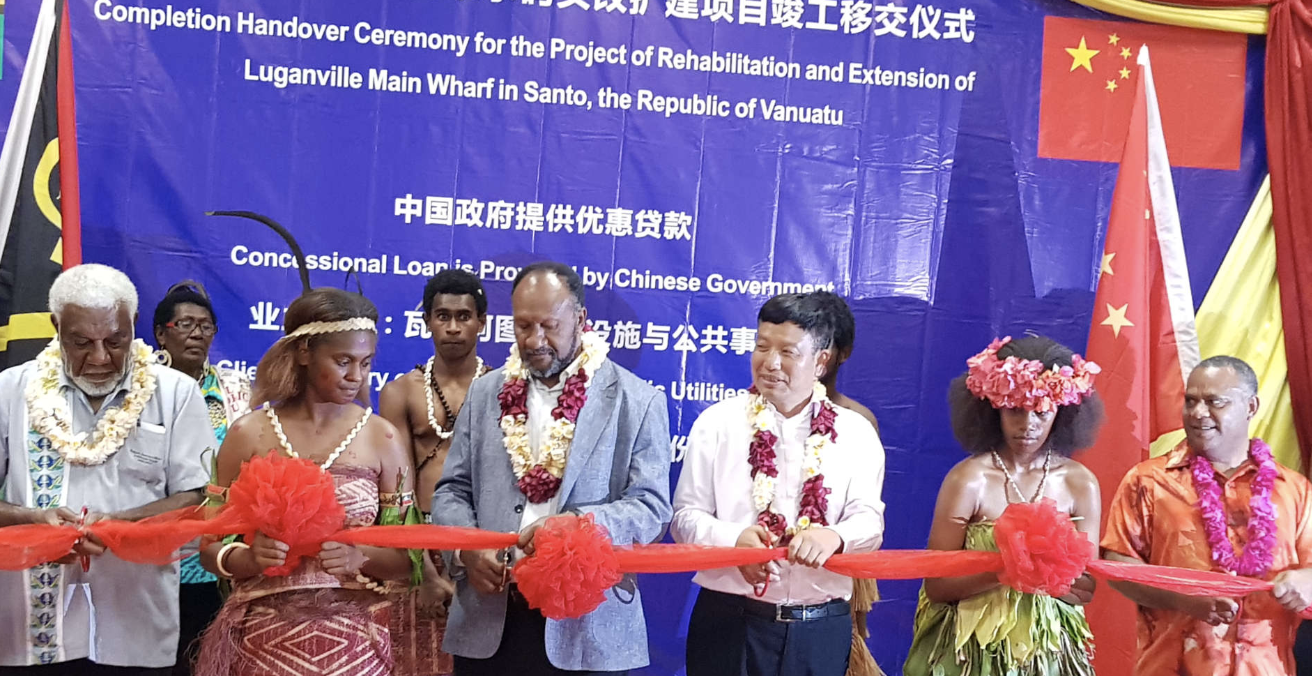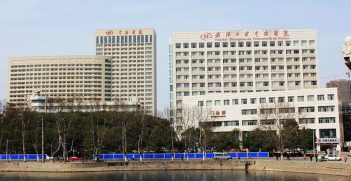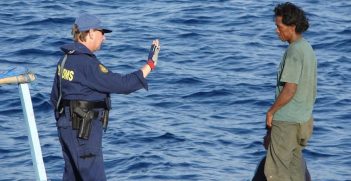Why Australia Shouldn’t Overreact to China in the Pacific

Australia appears to be gripped by fears of China’s expansion and “debt-trap diplomacy” in the Pacific. But the evidence suggests Pacific states know what they’re doing, and China is driven more by economic than geostrategic interests.
Touted as initiatives aimed at assisting Pacific Island countries to meet their development needs, Canberra’s “Pacific step up” and its proposal of an AU $2 billion Australian Infrastructure Investment Fund for the Pacific (AIFFP) clearly serve a dual purpose: to counter Beijing’s regional infrastructure drive and perceived assertiveness in Australia’s “patch.”
Our broader concerns about the rationale behind the AIFFP and the inappropriateness of its mechanisms are outlined in our recently released report, Enter the Dragon. But the focus here is on the “Pacific step up” and Australia and China’s engagement with the Pacific.
Make no mistake, Australia remains the largest donor to the Pacific in terms of actual money spent. The Australian government moved to consolidate this position on 3 April by expanding the powers of Efic, the country’s export credit agency, with the passing of the “Efic bill.” But it is still highly likely China will become the largest donor in the Pacific, especially given the growth in Chinese aid and Beijing’s 2017 pledge to deliver US $4 billion worth of aid to the region.
Reminiscent of concerns about the geopolitical ramifications of Chinese money in Africa, developing Asia and Latin America, questions surrounding China’s economic engagement with Pacific Island countries (PICs) centre on the motives and intentions that underpin Beijing’s presence in the Pacific. Despite official rhetoric lauding Chinese aid as representing the country’s commitment to South-South cooperation, fears that PICs might “drown” in Chinese debt and suffer from the negative consequences of dubious Chinese infrastructure schemes (for example, the US $12 million, six-lane Independence Boulevard in Port Moresby) have raised doubts over the benefits of Chinese money.
China is not a conventional aid donor. A considerable portion of its “no strings attached” aid will invariably be imbued with symbolic and pragmatic value. The secrecy surrounding its aid figures has further fueled scepticism of Beijing’s intentions, as ascertaining the exact proportion of Chinese loans and payments that are tied to resource or equity deals proves exceedingly difficult. But what’s clear is that China’s behaviour in the Pacific isn’t remarkably different from what it’s been doing in other countries across the developing world. Just as Chinese aid is intimately connected to its broader investment strategy in these regions, so China’s desire to enhance its soft power has remained linked to efforts, dating back to the 1990s, to expand the global investment portfolio of Chinese state-owned enterprises.
Compared to industrialising regions like Africa and Southeast Asia, which have long served as major destinations for Chinese official development aid (ODA) and investment, the overall scale of Chinese aid and commercial financing in the Pacific is smaller. This indicates the Pacific might still not rank all that high on China’s policy agenda. Combined with burgeoning evidence of how Chinese finance doesn’t necessarily impede the effectiveness of grants and loans from Western donors in other parts of the world, it would be premature – if not misguided – to treat current Chinese behaviour in the region as a “premeditated” provocation towards Australia.
Three additional considerations illustrate why Beijing should not be simply depicted as a pressing geostrategic threat to Australia.
1. Pacific Island countries are not helpless “damsels in distress”
The agency of PICs in manoeuvering between Australia, China and other donors should not be overlooked. When it comes to small and micro-states, there is a tendency to underestimate the ability of these states to negotiate and influence their more powerful counterparts. Myanmar’s recent attempts at hedging between the United States and China serve as an instructive example, with both the Thein Sein and Aung San Suu Kyi governments having sought to diversify away from either partner at critical junctures (for example, the Thein Sein administration attempted to move away from China following the 2010 suspension of the Chinese-backed Myitsone dam). In the Pacific, Vanuatu can also be seen hedging and leveraging strategic rivalries to promote its own infrastructure development: its receipt of a US $20 million investment from Huawei to build a communications network reportedly prompted a million-dollar commitment from Australia to fund its telecommunications regulation and management.
The lead-up to Papua New Guinea’s (PNG) hosting of the 2018 Asia Pacific Economic Cooperation (APEC) Summit was also illustrative in this regard. The PNG government received millions of dollars in financial and in-kind assistance to prepare for the summit from Australia, China and Japan. As China’s Maritime Silk Road Initiative extends into the Pacific, the new attention paid by the Asian Development Bank and World Bank to funding projects in the region further suggests how PICs can gain greater manoeuverability in choosing the “more favorable” deal.
2. There are other (problematic) players in the Pacific
A tunnel focus on China’s actions in the Pacific can lead us to neglect the presence of other state and non-state actors, some of which are equally worrying in their behaviour as donors and investors. Taiwan has long been active in the region, competing with China for diplomatic recognition through payment of bilateral aid. While the Taiwanese have provided aid mainly in the form of grants as opposed to concessional loans, this has not prevented controversy. In an infamous example, former Taiwanese Minister for Foreign Affairs James Huang gave US $30 million to two brokers as “foreign aid” for the PNG government, on the condition the country switch its recognition from Beijing to Taipei. Concerns have also been raised in relation to the involvement of Malaysian companies in the region’s palm oil sector that poses serious social and environmental challenges for countries like PNG. There is also the track record of Australian firms investing in problematic resource schemes, of which the troubled history of the Gold Ridge Mine in the Solomon Islands comes to mind.
3. For China, it’s probably more about the profits
China’s engagement with the Pacific has been evolving from a focus on competing with Taiwan and securing access to offshore natural resources, to one of profit-making and expanding commercial opportunities for its industries. Given China’s hybrid model of development assistance that mixes traditional aid grants with zero-interest and commercial finance in the form of concessional loans, commercial interests appear to factor as prominently in Chinese decisions to provide ODA or invest in an infrastructure project as political considerations. Despite the establishment of the China International Development Cooperation Agency to mitigate the well-documented rivalry between the Ministry of Commerce (MOFCOM) and the Ministry of Foreign Affairs in implementing the country’s aid strategy, MOFCOM continues to play a central role in managing China’s grants and zero-interest loans; just as the China Development Bank and China Export-Import Bank remain key financiers responsible for disbursing concessional loans.
The rationale for ODA or investment projects can also be informed by the corporations involved and their desire to turn a profit and gain access to local markets. Studies are revealing how Chinese aid tends to have the underlying objective of promoting Chinese exports or market-rate loans that Beijing wants to see repaid. This accounts for why Chinese concessional loans tend to require preferential treatment for Chinese contractors or exporters. It also highlights the need for caution when interpreting the projected impacts of Beijing’s promised aid: while historically China appears to have followed through on its smaller pledges to PICs, the delivery of bigger commitments such as the US $4 billion pledge in 2017 are likely to be subject to stringent, commercial-based assessments of risk and benefit. In fact, within Chinese policy circles, there is still not much official clarity on how or when the Chinese pledge to provide PNG with a US $3.5 billion loan for its proposed High Priority Economic Road Project will be delivered.
Considering how the negative sociopolitical and environmental repercussions of Chinese infrastructure projects have managed to stoke local opposition and deepen anti-Chinese sentiments in the Pacific, inadequately regulated Australian infrastructure projects in the region could similarly result in long-term financial and reputational costs – as has previously been the case for Australian resource investment in the past. Given the billions of dollars to be channeled into Canberra’s “Pacific step up,” how Australia perceives and responds to China’s presence in the Pacific deserves careful reconsideration. Australia might otherwise find itself unduly jeopardising its bilateral economic relationship with Beijing by overreacting to an exaggerated “China Threat.”
Dr Pichamon Yeophantong is an Australian Research Council DECRA fellow and senior lecturer at UNSW Canberra at the Australian Defence Force Academy.
Dr Luke Fletcher is the executive director of the Jubilee Australia Research Centre and a visiting fellow at UNSW Sydney.
Elements of this piece are adapted from “Enter the Dragon: Australia, China, and the New Pacific Development Agenda” a joint report by Jubilee Australia, Caritas Australia and the University of New South Wales.





